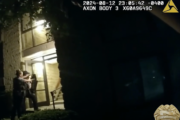Daylight saving time comes to an end this weekend —meaning our clocks get turned back one hour on Sunday at 2 a.m. — and the change brings an increased threat of drowsy driving on the roads.
“Drowsy driving is impaired driving,” said Joseph Dzierzewski, a lead researcher at the National Sleep Foundation.
According to new research from the foundation, even though 95% of Americans believe driving drowsy is risky, more than 37 million people do it at least once a year.
Messing with the clocks can bring it about more frequently.
“Any time you just artificially change the time that it is, you run the risk of there being this mismatch between the world outside and our internal clock, and that can just make sleep difficult,” Dzierzewski said.
More than six in 10 drivers admit to having driven a car when they were so tired they had a hard time keeping their eyes open, according to the National Sleep Foundation’s research. That amounts to more than 150 million drivers in the U.S.
“We want everyone to get the sleep they need before they get behind the wheel of a car,” Dzierzewski said.
The National Sleep Foundation tries to raise awareness every year, designating the week following the end of daylight saving time as Drowsy Driving Prevention Week.
Dzierzewski said it’s not enough for drivers to simply power through with caffeine.
“I consider the Red Bulls and the coffees as Band-Aids,” Dzierzewski said. “The best thing is to not get a cut in the first place.”
Daylight saving time is defined as a period between spring and fall when clocks in most parts of the country are set one hour ahead of standard time.
Standard time lasts for roughly four months in most of the country.
Members of Congress have long been interested in the potential benefits and costs of daylight saving time since it was first adopted as a wartime measure in 1942.
In March, the Senate approved a measure that would make daylight saving time permanent across the United States.
“No more switching clocks, more daylight hours to spend outside after school and after work, and more smiles — that is what we get with permanent daylight saving time,” said Sen. Ed Markey of Massachusetts, the original cosponsor of the legislation.
While the legislation passed in the Senate, it fell short in the House. Nearly a dozen states across the U.S. have already standardized daylight saving time.
The Associated Press contributed to this report.








